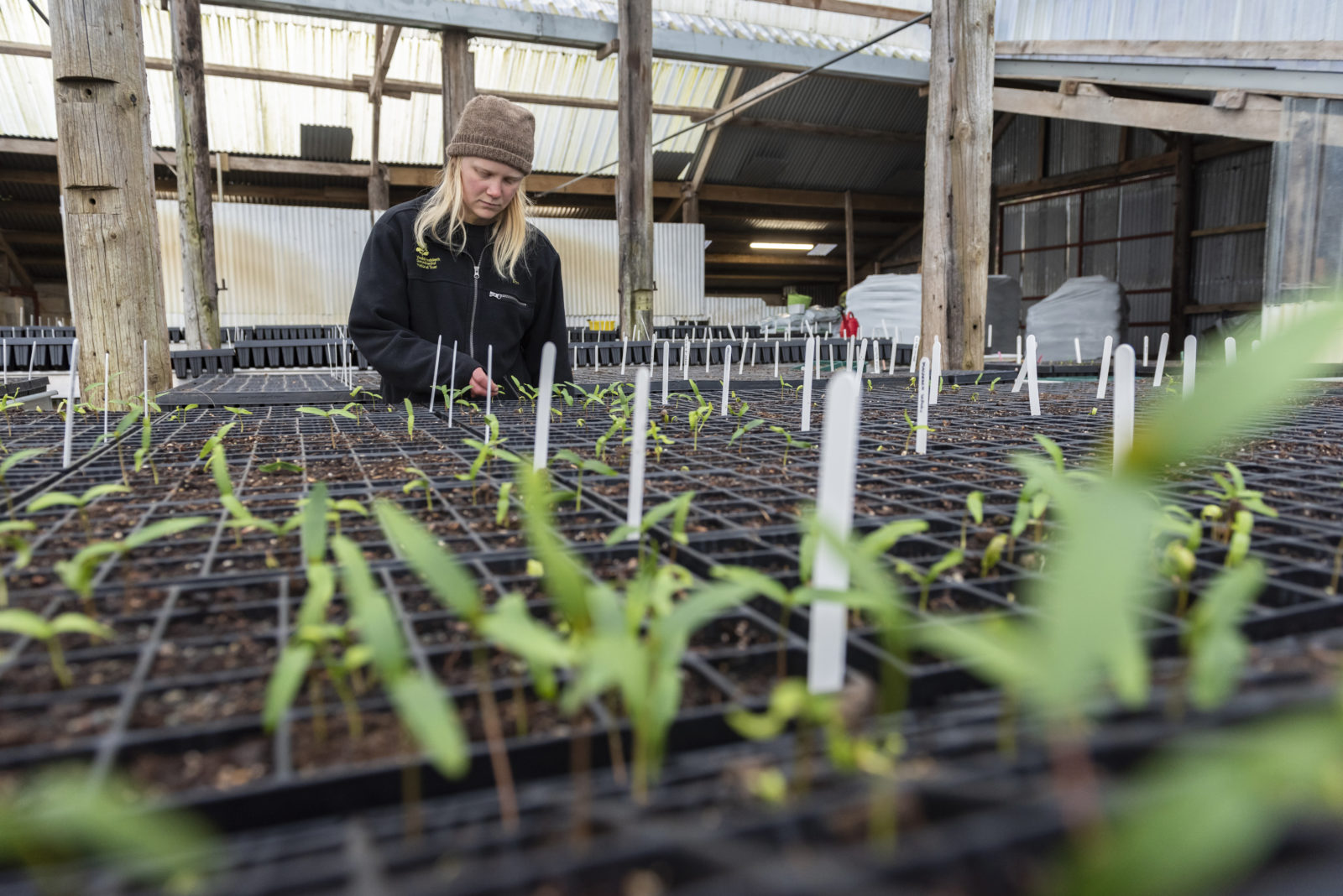National Trust Cymru has established a new tree nursery, located in a remote area of Wales, to nurture endangered native tree species to help protect the area’s sensitive temperate rainforest environments and tackle the climate crisis.
The nursery in Eryri (Snowdonia), which is run by National Trust Cymru lead ranger David Smith, ranger Hattie Jones and a team of volunteers, is the first of this scale in the care of the conservation charity across England, Wales and Northern Ireland.
The charity cares for 58,000 acres (23,471 hectares) of land in Eryri, and the trees grown at the nursery will be distributed to carefully chosen locations in the area to renew and future-proof the health of woodlands in the region.
In the nursery, which aims to grow 30,000 trees per annum, many of the young trees are rare and endangered native species, including black poplar, which is the most endangered timber tree in Britain due to its narrow genetic make-up.[2]
Other species grown in the nursery, such as hornbeam, were chosen to boost woodlands’ resilience to the effects of climate change. These varieties will adapt better to warming conditions than those of Eryri’s current climate, while also being able to mitigate the impact of ash dieback by supporting wildlife including liverwort, fungi and invertebrates such as beetles which typically rely on ash.
David Smith, lead ranger for the National Trust in Eryri said: “Our focus is on planting the right tree in the right place. The nursery is a very exciting opportunity to grow all the trees that are needed in Eryri, and make a lasting difference to these local woodlands where the new trees will be growing for thousands of years, providing habitats for lots of different wildlife such as warblers, moths, bats and even otters.”
Grown from locally collected seeds, the trees are more biosecure and resilient to area-specific diseases than imported counterparts, while also being innately well-adapted to Eryri’s unique climate, which constitutes one of the last remaining fragments of Celtic or temperate rainforest in the UK. Characterised by especially high rainfall and humidity and a low annual variation in temperature, the Celtic rainforest is a key habitat for many rare mosses, liverworts, and lichens.
Over the centuries, the Celtic rainforest, which used to run the length of the western seaboard of the UK, has deteriorated largely due to invasive species and diseases such as ash dieback. Now, only fragments remain, limited to North and West Wales, Devon, Cornwall, Cumbria, the West of Scotland and parts of Northern Ireland, covering less than 1% of Britain.
David continued: “Celtic or temperate rainforests are a precious part of Eryri’s landscape. It is really important to use our local trees which are already well-suited to this particularly damp climate to help us restore this special habitat which has long been in decline, and to link it up with other fragments of temperate rainforest.
“In the long run, this will not only have a range of benefits to the landscape, but it will also allow us to tackle the climate emergency we are facing by growing and planting trees which will be soaking up carbon for years and years to come.”
The nursery trees will be grown in different size cells or containers for four years before being planted outside, producing larger saplings than what can be purchased from wholesale retailers. This ensures the best possible start for the young trees, improving their chances of successfully establishing themselves as they are while also making them more resilient against drought conditions.
Already, trees grown in the nursery have been planted in the surrounding Eryri landscape, including Hafod Garregog, near Porthmadog. The reclaimed seabed, which was previously covered in rushes and prone to flooding, is now growing native saplings that will bring a much-needed wildlife boost as well as encouraging a diverse range of plants to grow.
The new trees border Hafod Garregog’s Celtic Rainforest, an internationally important site due to its variety of mosses, lichens and liverworts, many of which are only found in Wales. Connecting the woodlands will link up and enhance wildlife habitats and the different species and varying maturity of trees will help the wider woodland become more resilient to the effects of climate change.
Alongside the Eryri nursery, the National Trust is also in the process of establishing two other tree nurseries, one located near the Holnicote Estate in the South West of England and one at Mount Stewart in Northern Ireland. All three facilities will play an important role in supporting their local woodland biosecurity ambitions, with hopes to grow up to 750,000 per annum of locally specific species.
John Deakin, Head of Trees and Woodland at the National Trust said: “Trees are the best natural solution to lock up existing atmospheric carbon. Growing them locally, in our own nurseries, ensures we know exactly where trees are from, that they are peat free, and that they are perfectly suited for their locations. As such, our nurseries will be an important cog in our ambitions to conserve these vulnerable eco-systems and combat the climate crisis.”
The work undertaken at the tree nurseries will also contribute to the National Trust’s ambition plant and establish 20 million trees by 2030.








Leave a Reply
View Comments